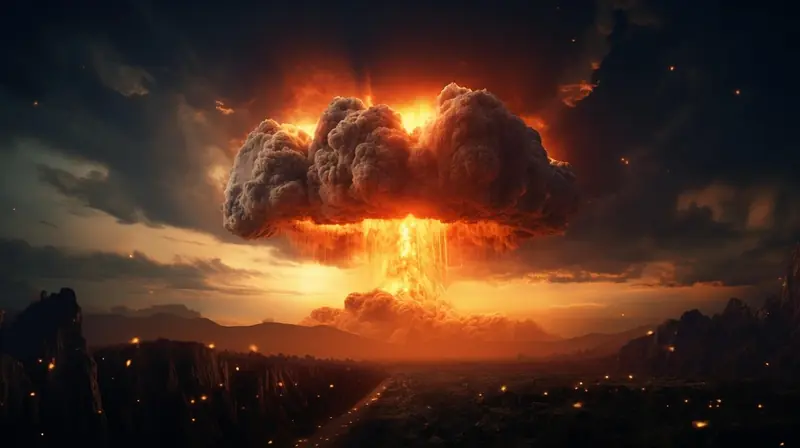
In August 2025, we will mark the 80th anniversary of the devastating atomic bombings of the Japanese cities of Hiroshima and Nagasaki. At that time, over 200,000 people lost their lives within a year, and the survivors faced lifelong health issues.
These are the only instances in history where nuclear weapons have been used for military purposes. However, the reality is that people today are increasingly feeling the threat of nuclear warfare. As of early 2025, there are still more than 12,200 nuclear warheads in the world.
What if those fears become reality?
A team from the Canadian scientific startup AsapSCIENCE explained that there is no straightforward way to assess the destructive impact of a single nuclear bomb. This impact depends on numerous factors, including the weather on the day the bomb is dropped, the time of day it detonates, and the geographical location of the explosion. It’s also crucial to consider whether the bomb detonates on the ground or in the air.
According to researchers, there are some predictable effects of a nuclear explosion that can influence survival chances. They noted that about 35 percent of the energy from a nuclear blast is released as thermal radiation. Since thermal radiation spreads at nearly the speed of light, the first thing a person would experience is a blinding flash of light and heat. Just the light alone can cause temporary blindness lasting several minutes.
The AsapSCIENCE team examined a scenario involving a one-megaton bomb. This bomb is 80 times more powerful than the one dropped on Hiroshima, yet significantly smaller than most modern nuclear warheads. As a result of such a bomb’s detonation, people up to 21 kilometers away on a clear day would experience temporary blindness, while those up to 85 kilometers away on a clear night would also be temporarily blinded.
High temperatures pose a serious threat to those closer to the explosion site. Within 11 kilometers, individuals can expect mild first-degree burns, while those within 8 kilometers may suffer from third-degree burns (which destroy and blister skin tissue). If third-degree burns cover more than 24 percent of the body and immediate medical assistance is not available, the chances of survival are slim.
The outcome depends not only on distance but also on clothing. For instance, white clothing reflects some of the explosion’s energy, while dark clothing absorbs it.
However, this factor becomes irrelevant for those caught near the blast.
Experts estimate that the center of a one-megaton nuclear explosion could generate temperatures close to 100 million degrees Celsius, which is about five times hotter than the core of the sun. This is more than enough to instantly break down the human body into its basic elements, such as carbon.
For those not near the explosion’s center, there are other factors beyond heat to consider. A nuclear blast also displaces air from the explosion site, creating sharp pressure changes that can obliterate everything in their path and topple buildings. Within a 6-kilometer radius of the epicenter, shockwaves exert a force equivalent to 180 metric tons on the walls of all two-story buildings, with wind speeds reaching 255 kilometers per hour. Within a one-kilometer radius, peak pressure is four times greater, and wind speeds can soar to 756 kilometers per hour.
Technically, people can withstand such pressure, but most would perish due to collapsing buildings. Even if one survives, they would likely face severe radiation poisoning.
In 2019, the AsapSCIENCE team modeled a nuclear war between the U.S. and Russia in a video. Based on this projection, within just a few days, the Earth would plunge into a nuclear winter due to the high levels of smoke and soot released into the atmosphere.
As noted by Science Alert, there are international treaties aimed at preventing the proliferation and use of nuclear weapons. Therefore, we can only hope that the people of our planet will never have to rely on this information.

